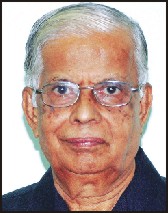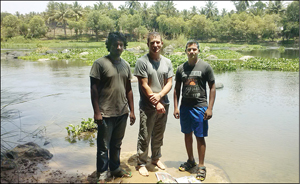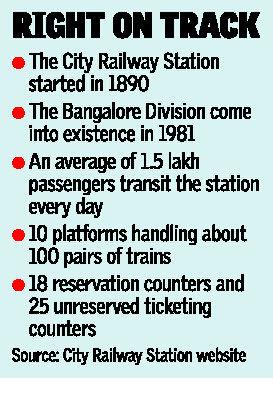by Prof. A.V. Narasimha Murthy, former Head, Department of Ancient History and Archaeology, University of Mysore
I am eighty now and I write this in all humility and gratefulness to my readers for following my weekly column and for your affection. Time and chance have always helped me. Eighty years ago I was born to a highly traditional family which had intimate connections with the Jagadgurus of Sringeri Sharada Peetha. I proudly remember my grandfather Aradikoppam Subramanya Sastri, a great scholar in Sanskrit who was a tutor to the great pontiff His Holiness Chandrasekhara Bharati Swamiji. At the invitation of the Maharaja of Mysore, he was sent to Mysore to become a Professor at Maharaja’s Sanskrit College and he served that institution with great distinction and consequently became close to the Mysore Palace. As a young boy of ten or so I wanted to become a scholar emulating my grandfather and that became my aim.
After passing my Intermediate (PUC), I joined the MA Indology course to study under the great South Indian scholar Padma Bhushana K.A. Nilakanta Sastri at Maharaja’s college, Mysore. This was a turning point in my career because I was a student of Nilakanta Sastri who was held in great esteem throughout the country. Just a telephone call by Sastriji to Dr. B.K. Thapar of the Archaeological Survey of India got me a job of Exploration Officer in ASI. At that time I was noticed by Prof. Oruganti Ramachandrayya of the Andhra University and he took me to his Department as a Faculty, even without an application. Professors had such powers in those days. But my mind was wandering in USA and I wanted to study at Harvard, perhaps the best and reputed University in the world.
At that time, an advertisement calling for Fullbright Scholarships appeared in newspapers. I applied to this scholarship with the blessings of my Professor Nilakanta Sastri. Dr. Olive Reddick was the Director of United States Education Foundation in India. I cleared the tests and interviews at National and International-level and being a student of Nilakanta Sastri was an added advantage. I was selected to study at Harvard University, a wish I had expressed in my application. I had the good fortune of studying under world famous Gordon R. Willey and Hallam L. Movius at Harvard, which perhaps no other student from Karnataka can boast of. I salute all these scholars for moulding my career in Archaeology.
I was dreaming to settle down in Harvard and at that time Pandit Jawaharlal Nehru gave a call to all Indians working or studying in foreign countries to return to India and serve their motherland. It touched my heart and immediately I came back to India.
Another chance presented itself to me. My Professor at Mysore University wanted that I should return to Mysore and take up Readership in Archaeology. My entire family was in favour of this proposal. I returned to Mysore and faced an interview when K.L. Srimali was the Vice-Chancellor. Prof. Dejagow was the Dean and he recognised my potential and with his blessings I became a Reader at a young age. He has been showering the same affection towards me till date and it was he who inculcated in me the workaholic culture. Many of the books I have authored have the stamp of his guidance. This I would say is another chance which came my way.
With Dejagow’s guidance and my own enthusiasm, I built up a Department of Archaeology which won the admiration of scholars not only in India but also abroad. When the Fifth Plan Academic Committee visited my Department they were greatly impressed and sanctioned many faculty positions and a vehicle (jeep) for conducting archaeological explorations. I also organised a small University Museum which used to be visited by distinguished visitors to the campus. I could not have done this all alone and naturally all my colleagues helped me. I also introduced excavation as part of our training and excavated Banavasi, Heggadehalli etc. I retired from the University in 1995 when I was 60 and I thought I could write some books. At that time I was made Professor-Emeritus by the UGC for two years. I completed that also.
One day Mathoor Krishnamurthy and N. Ramanuja came to my house and asked me to be the Chairman of Bharatiya Vidya Bhavan (BVB), Mysore. His Holiness Sri Ganapathy Sachchidananda Swamiji’s blessings were there for this proposal. Having lot of respect for the Swamiji, I accepted the offer. I immediately roped in K.B. Ganapathy, Editor, Star of Mysore and P.S. Ganapathy, owner of a Printing Press. With the enthusiasm of the culture-loving Mysureans, Vidya Bhavan has become a household name.
Another thing which gave me full scope and satisfaction was the publication of Kannada translation of all the literary works of Kulapathi K.M. Munshi. The authentic history and culture of India in eleven volumes planned by Munshiji and executed by R.C. Majumdar is a valuable contribution. This was not available in Kannada. I took up the Kannada translation of these volumes with the help of many good translators. This is available in 25 parts in Kannada. Now most of these volumes have seen many editions.
In the wake of the success of this publication, I initiated translation of all the English works of Kulapathi Munshi into Kannada. Now we have published 22 works in this series so that the thoughts of Kulapathiji can reach the Kannada reading public. I can take great pride because perhaps no other Indian language (excluding Gujarati and Hindi) except Kannada has this great distinction. Many awards have been conferred on me for my academic contribution including the Puratatva Ratna award and Kannada Rajyotsava award by the Karnataka government. Another award which I cherish and value greatly is the Kulapathi K.M. Munshi award.
K.B. Ganapathy, Editor-in- Chief, Star of Mysore and Mysooru Mithra gave me an opportunity to write a weekly column under the title ‘Pages From History’ and this has made me quite popular in Mysuru which is being well-received by the readers in English and Kannada since seven years. Thus I am greatly indebted to KBG.
When I take stock of my life, I become conscious of the fact how various people have helped me in their own way. Without their support, I would not have been what I am today. That only shows the historical truth that man is governed by circumstances and chances. Chances never come again and again. Only a city bus comes again and again though at irregular intervals. Hence, a person with a purpose and aim in life should be open-minded and grab a chance when it arrives or go after it, if necessary.
This is what life has taught me during these eighty years and I have always tried to adjust to the circumstance without compromising the basic values of ethical and purposeful life. I am fortunate that my family members always stood by me during my life’s journey through thick and thin.
Again it is my good fortune that Mysore District Kannada Sahitya Parishat under the leadership of M. Chandrashekar, President, along with T.S. Chayapati of Talukina Venkannayya Publication, have arranged a felicitation function on 29th of this month in Jagadguru Sri Shivarathri Deshikendra Swamiji’s saanidhya. It is my good fortune that MLA Vasu, MUDA Chairman K.R. Mohan Kumar, scholar Dr. N.S. Taranath and Dr. C. Naganna have agreed to take part in this programme. Two of my books, Yadavas and Indian Epigraphy will be released on the occasion. I think, I could not have bargained for a more meaningful 80th birthday. This is traditionally referred to as Sahasra Chandra Darshana ritual. This is next in importance to 60th birthday (Shastipoorthi).
I and my wife Kamalamba consider ourselves fortunate and we simply accept it with gratitude. We look forward to 29th May. However, I continue to meet you all through my column every week as usual.
A Big Thank You to all.
source: http://www.starofmysore.com / Star of Mysore / Home> Feature Articles / Saturday – May 23rd, 2015






